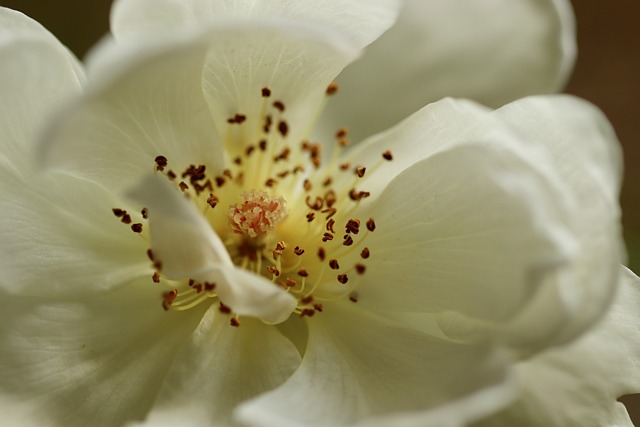
Learning the many intricacies of horticulture can be intimidating and even discouraging. Like most things worthwhile, devoting a little time and effort can yield promising results. Now that you’ve found these tips, you will be more informed and can become a better gardener.
Mature Plants
Start your plants in containers before transferring them to the garden. They are then more likely to survive and to become thriving, mature plants. This also enables you to close gaps between planting cycles. As soon as you harvest the mature plants in your garden, your new seedlings will be large enough to plant outside!
Turn your tool handles into convenient rulers. Tools with long handles, such as rakes, hoes, and shovels can be converted into handy measuring sticks. Lay the tools down on the floor, then place a measuring tape along the handle. With a permanent marker, note pertinent measurements on the tool handle. Next time you are working in the garden, you will have a large ruler at your fingertips!
You don’t need a costly chemical solution to deal with powdery mildew in your garden. Mix a bit of liquid soap and some baking soda into water. Once a week, spray this solution on your plants and your mildew should disappear in no time. Baking soda won’t harm your plants, and takes care of the mildew efficiently and gently.
When you’re out and about in the garden, particularly in the fall, keep an eye out for sink bugs. Stink bugs like to reside in tomatoes, beans, and pepper plants, as well as many fruits. They can do a lot of damage if they are not controlled.
Autumn not only means colder weather but new vegetables to plant. Try something different by planing kale or lettuce inside a pumpkin, instead of using the planter pots you traditionally use. To use the pumpkin as a planter, it is important to prevent it from rotting. To do this, you simply spray the entire inside and any edges with a horticulture spray called Wilt-Pruf. This is done after you’ve opened the pumpkin at the top and removed the insides. You can start planting now.
Coffee Grounds
If you learn that your soil has a high amount of alkaline, mix some used coffee grounds into it. The coffee grounds are an inexpensive way to give some acid back to the dirt. With it, you will find that your greens and vegetables will be more vibrant and tasty!
Keep your plants dry and aerated daily. Moisture on the surface of a plant can attract parasites, and cause disease. A commonplace plant parasite is fungi. Be sure to prevent the growth of fungus with a spray that will inhibit their growth.
Many people delight in the taste of fresh mint leaves, but become frustrated when the plant spreads wildly. Try to keep your mint in a container in your garden to stop their rampage. Then, you can plant the container into the ground. However, the container walls will keep the roots held, and prevent the plant from consuming too much of your garden space.
You can help provide nutrients by watering your plants with room temperature water that is leftover after cooking vegetables. You may fertilize the soil with tea or coffee for plants that favor acidic environments, like rhododendrons and gardenias. If you find that you have a fungus problem, try sprinkling some chamomile tea on your plants.
One particular plant should be the focal point of your garden. You need a focal point that can catch your eye in garden design. Usually this focal point is a luscious plant that is distinctly different from the plants and scrubs that surround it.
To avoid tracking the mud and dirt that will get on your horticulture shoes, use plastic bags. You’ll be able to keep your momentum going without needing to take off your shoes, and stay on track with your gardening project.
Bring more value to your property. You can get a very high return from improving your home through landscaping. In fact, you can boost your home’s value by a fifth with the right landscaping, and in the right market. Different plants thrive in different environments, so be sure to invest in plants that are low in moisture, and will flourish in your garden.
Regularity is the key to keeping your organic garden in order, don’t let your list of chores pile up. Every time you go outside, you should take care of a few things so that you do not have too much work to do when you have the time to go back to your garden. Take the time to do a little weeding or something else that needs to be done each time you have to be outside keeping an eye on your dog, which for some can be several times a day.
Do you want to kill weeds without using commercial chemicals? Try using several newspaper layers to control weeds. Weeds need sun for growth, just like any other plant. When you pile up layers of newspapers right on top of the weeds, they will suffocate and die. Newspaper decompose quickly and integrate into the compost. Add visual appeal by placing some mulch over the top.
A good general rule when planting your seeds into containers is that the depth of the planting should be about three times the size of the seed. There are exceptions, however. Some types of seeds require more direct sunlight than others, and as such they should not be fully covered. Examples of these are petunias and ageratum. If you’re not sure, a guide either comes with seeds, or you can find this information online.
Not as difficult as you thought, right? Like other subjects, horticulture has a ton of knowledge available. Sometimes, you just need some advice about where to begin in order to start working in your garden. Follow our tips to start happily on your way.